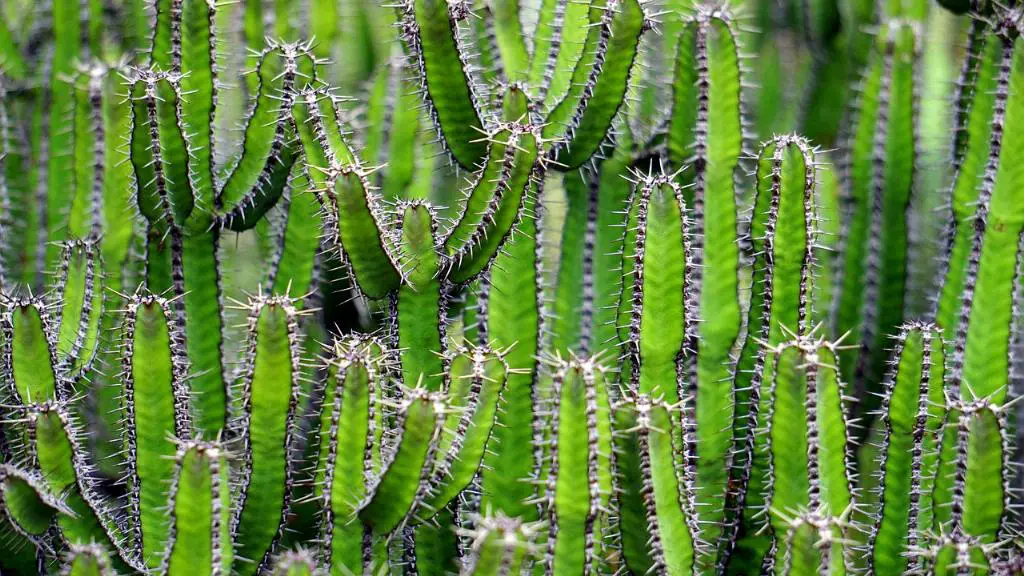One of the critical factors in successfully growing succulents is to plant them in well-drained soil. Succulents do not like to sit in waterlogged soil, as it can lead to root rot. Ensure the pot has drainage holes to allow excess water to escape and use a specialized succulent potting mix or amend regular potting soil with sand or perlite for improved drainage.
Go Easy on the Water
Succulents are known for their ability to store water in their leaves, stems, or roots, making them drought-tolerant plants. Therefore, it is essential not to overwater succulents. Allow the soil to dry out completely between waterings, and always water the plants at the base to avoid wetting the foliage, which can lead to fungal diseases.
Plant Them in Containers With Drainage Holes
When selecting a container for your succulents, opt for pots with drainage holes. These holes allow excess water to escape, preventing the roots from sitting in stagnant water. Additionally, ensure the pot is not too large for the plant, as this can lead to excessive moisture around the roots.
Keep Them Comfortably Warm
While succulents are adapted to arid environments, they still require warmth to thrive. Most succulents prefer temperatures between 60-80°F (15-27°C). Avoid exposing them to extreme cold or heat, as this can stress the plants and affect their growth.
Get the Light Right
Succulents love bright, indirect light. Place them near a window that receives plenty of sunlight throughout the day. If growing succulents indoors, ensure they receive at least 6 hours of sunlight daily. Rotate the plants regularly to promote even growth and prevent stretching towards the light source.
Keep Their Colors Vibrant by Giving Them Sun
Sunlight plays a crucial role in maintaining the vibrant colors of succulents. Insufficient light can cause them to become dull or lose their pigmentation. Provide your succulents with ample sunlight to enhance their beauty and promote healthy growth.
Let Them Sleep During Winter
During the winter months, many succulents go through a period of dormancy. This is a natural cycle where growth slows down, and the plants may require less water. Reduce watering frequency in winter and protect succulents from cold drafts to help them rest and prepare for the next growing season.
Take Them Outside
If weather permits, consider moving your succulents outdoors during the warmer months. Outdoor conditions can benefit succulents, as they receive more natural sunlight and air circulation. Just make sure to acclimate them gradually to prevent sunburn or shock from sudden environmental changes.
Monitor for Pests and Diseases
Regularly inspect your succulents for signs of pests such as mealybugs, spider mites, or aphids. If you notice any pests, gently remove them with a cotton swab dipped in rubbing alcohol or treat the plant with a natural insecticidal soap. Additionally, watch out for signs of disease, such as rot or fungal infections, and take prompt action to prevent spreading.
Experiment with Different Varieties
Succulents come in a wide range of shapes, sizes, and colors, offering endless possibilities for creating unique and eye-catching displays. Experiment with different varieties to discover which ones thrive in your growing conditions and bring diversity to your succulent collection.
Practice Patience and Observation
Growing succulents is a rewarding experience that requires patience and keen observation. Take the time to observe your plants regularly, noting any changes in growth, color, or texture. Adjust your care routine accordingly to ensure your succulents thrive and continue to bring beauty to your indoor or outdoor space.

Share Your Succulent Journey
Finally, don’t hesitate to share your succulent journey with fellow plant enthusiasts. Join online forums, attend local plant swaps, or start a succulent-themed social media account to connect with like-minded individuals and exchange tips, experiences, and inspiration. Building a community around your love for succulents can enrich your gardening experience and provide endless learning opportunities.
